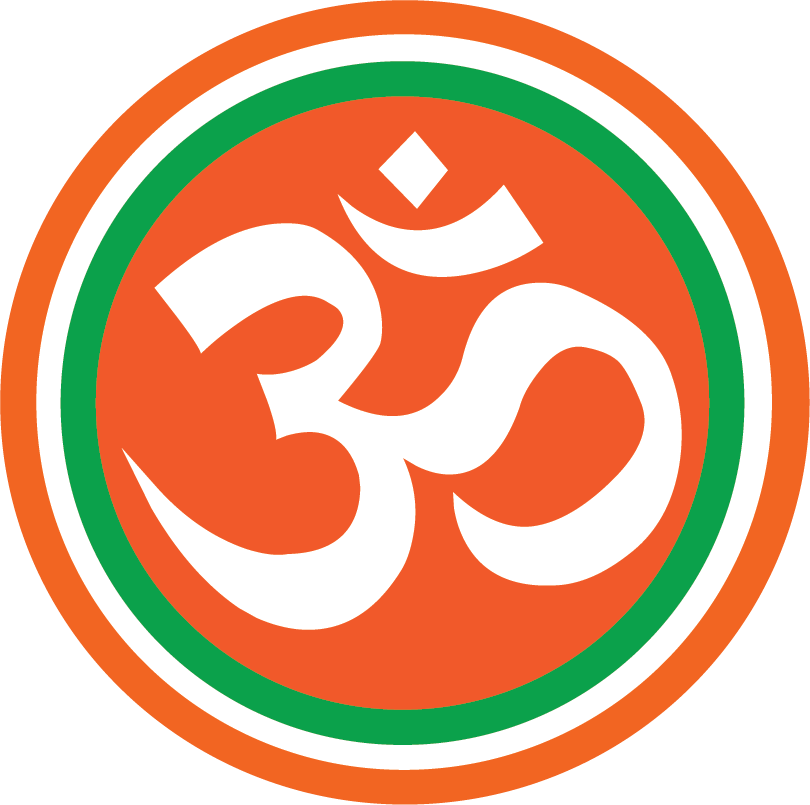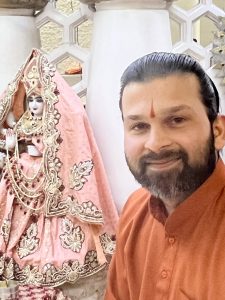Symbols
Hindu symbols are an integral part of Hinduism. As Hinduism is the oldest religion on Earth, it has more numbers of symbols than other religions. Each Hindu symbol has a different meaning and is used on different occasions.
What does AUM or OM mean?

"Aum" (also spelled as "Om") is a sacred sound and spiritual icon in Indian religions, including Hinduism, Buddhism, Jainism, and Sikhism. It holds deep significance and is considered a primordial sound from which the universe originated. The symbol "ॐ" represents this sound visually.
In Hinduism, "Aum" is considered the most sacred mantra and is often chanted at the beginning and end of prayers, meditations, and rituals. It is believed to encompass the essence of the ultimate reality, representing the three aspects of existence:
- A (अ): Represents the waking state, material reality, and the external world.
- U (उ): Represents the dream state, the mind, and the subtle realms.
- M (म): Represents the deep sleep state, the unconscious, and the spiritual dimension.
Chanting or meditating on "Aum" is known to have a profound spiritual and transformative effect. It is a way to connect with the divine, attain higher states of consciousness, and align oneself with the cosmic vibrations.
Overall, "Aum" is a symbol and sound that encapsulates the profound philosophical and spiritual concepts of existence, consciousness, and the interconnectedness of all things in Indian Dharma.
Why do we do Tilak?
 From an Indian Dharmic perspective, which includes Hinduism, Buddhism, Jainism, and Sikhism, the application of a tilak on the forehead holds spiritual and cultural significance. Here's how it's viewed within these traditions:
From an Indian Dharmic perspective, which includes Hinduism, Buddhism, Jainism, and Sikhism, the application of a tilak on the forehead holds spiritual and cultural significance. Here's how it's viewed within these traditions:- Hinduism:
- Devotion and Identity: Applying a tilak is a way to express devotion to a particular deity or lineage. Different sects and communities within Hinduism use distinct tilak marks to signify their allegiance.
- Third Eye Activation: The spot where the tilak is applied corresponds to the "ajna chakra" or the third eye, which is believed to be a center of consciousness and spiritual insight. Applying a tilak here can symbolize awakening the higher consciousness.
- Buddhism:
- Spiritual Connection: In some Buddhist practices, a dot or mark is applied to the forehead as a reminder of the spiritual path and as a symbol of mindfulness. It can represent the "third eye" of wisdom and insight.
- Jainism:
- Spiritual Purity: Jainism places great emphasis on purity, both in thought and action. Applying a white sandalwood paste or rice paste tilak is a way to symbolize purity and spiritual commitment.
What does Swastika mean
 The swastika is the second most important of all Hindu symbols. The word Swastika can be broken as Su+Asti+ka where Su means good and Asti means “it really is” and “ka” makes the word a noun. That means “Everything is good.”The swastika is also considered to be sacred and represents luck and prosperity. A swastika is drawn on Kalash at the time of Hindu rituals. It is also used in pendants and printed on the walls of Hindu temples.
The swastika is the second most important of all Hindu symbols. The word Swastika can be broken as Su+Asti+ka where Su means good and Asti means “it really is” and “ka” makes the word a noun. That means “Everything is good.”The swastika is also considered to be sacred and represents luck and prosperity. A swastika is drawn on Kalash at the time of Hindu rituals. It is also used in pendants and printed on the walls of Hindu temples.What does Lingum mean??

The lingam holds multiple layers of meaning that reflect cosmic and spiritual principles:
- Divine Creation and Energy: The lingam is seen as a representation of the divine creative energy that brings the universe into existence. It symbolizes the unmanifest aspect of the Supreme, representing the formless and limitless nature of God.
- Unity of Male and Female Energies: The lingam is often depicted alongside the "yoni," which represents the feminine aspect. Together, they symbolize the union of male and female energies, creation, harmony, and balance in the cosmos.
- Cycle of Birth and Rebirth: The shape of the lingam can also be seen as a representation of the cycle of life, death, and rebirth. It signifies the eternal process of creation, sustenance, and dissolution in the universe.
- Transcendence and Enlightenment: The vertical shape of the lingam represents a connection between the physical and the spiritual realms. It is often associated with the idea of transcendence, rising beyond ordinary existence, and seeking higher states of consciousness and enlightenment.
- Shiva's Symbolism: In Hinduism, the lingam is deeply linked to Lord Shiva, one of the principal deities. Shiva is often regarded as the meditator, the ascetic, and the destroyer of ignorance. The lingam serves as a reminder of Shiva's attributes and teachings, encouraging devotees to seek spiritual growth and self-realization.
- Inner Journey and Self-Discovery: The worship of the lingam is also symbolic of an inner journey. It signifies delving deep into one's consciousness, seeking to discover the divine essence within oneself.


